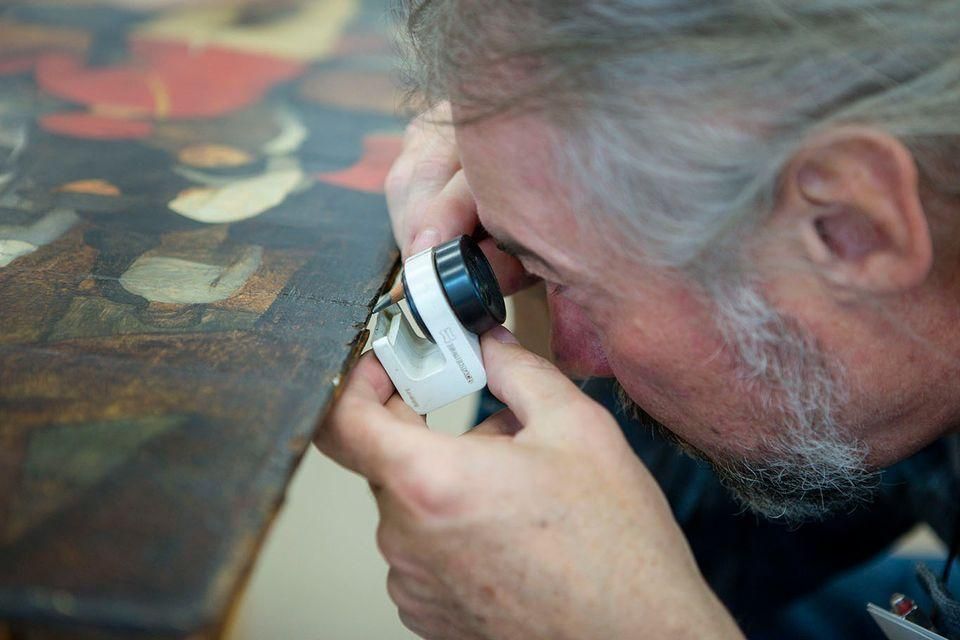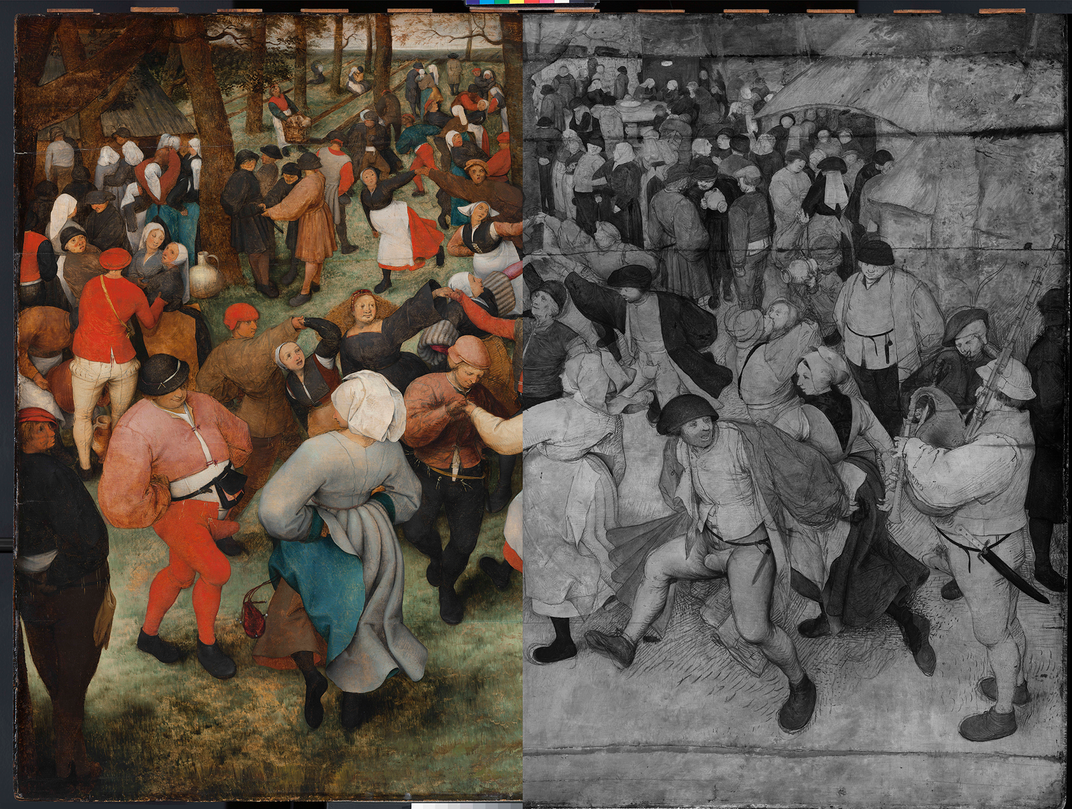Detroit Exhibit Celebrates Bruegel’s ‘The Wedding Dance’ and Its Controversial Codpieces
The painting’s frank depiction of drunk frivolity—and male anatomy—didn’t sit well with some viewers
/https://tf-cmsv2-smithsonianmag-media.s3.amazonaws.com/filer/6b/65/6b6588de-1f90-4c52-b09d-bb5c08dbe629/pieter_bruegel_de_oude_-_de_bruiloft_dans_detroit.jpg)
Long before there were jockstraps, codpieces scandalized the world in both art and life. These ostentatious ornaments, sewn onto trousers first to disguise, then emphasize, the nether regions of the male body, stoked so much controversy that they were once censored out of Pieter Bruegel the Elder’s 1566 painting The Wedding Dance.
Now, art buffs have the chance to view the painting and its jovial cast of characters in their full glory. To mark the 450th anniversary of Bruegel’s death, the Detroit Institute of Arts (DIA) will host an exhibition centered entirely on the acquisition and evolution of one of the artist’s most celebrated works—codpieces and all.
Stretching across three galleries, the exhibition, titled “Bruegel’s The Wedding Dance Revealed,” is the culmination of four years of archival research and scientific testing by the museum’s art and conservation staff, reports the Art Newspaper’s Nancy Kenney. That might seem like a lengthy period to focus on just one painting, but over the past four-plus centuries, this particular oil-on-panel artwork has endured its fair share of controversy—and not just for its prominent phallic flaps.
When Bruegel first set to work on The Wedding Dance, the Netherlands was in a state of turmoil. Spain’s Philip II, a devout Roman Catholic who wielded governmental authority over the region, had begun to crack down on the practice of Protestantism and the many peasants that followed the religion. Bruegel’s painting was a fervid rebuttal to this foreign incursion—a way of “reminding his fellow citizens of traditional values,” as George Keyes, the DIA’s chief curator and curator of European paintings, told the Detroit Metro Times’ Rebecca Mazzei in 2006.

The painting’s subjects—the guests of a wedding reception—are an accordingly uninhibited bunch. Spirits bolstered by booze and live music, they flirt, dance, gossip and kiss in the scene’s crowded landscape. The atmosphere is warm, jovial and vivacious. With vivid pigments and an abundance of curves, Bruegel’s painting captures the invigorating frivolity of everyday people, unencumbered by the oppression of a new regime. And yes, there are codpieces, a fixture of the time meant to draw attention to male anatomy but also helpful in providing easy access for men looking to relieve themselves after knocking back a few. (Bruegel didn’t exactly make a name for himself by shirking the realities of human physiology.)
This frank, almost voyeuristic glimpse into Netherlandish life didn’t sit well with certain viewers. At some point in the artwork’s past, a vandal scratched or scribbled lines on five of its most prominent codpieces. The offending attire was then painted over. A 1941 restoration, explored in depth in the DIA exhibition, reversed the treatment, unveiling the offending accoutrement to the world once more.
But even in 1941, “The codpieces were not very welcomed,” says Ellen Hanspach-Bernal, DIA’s paintings conservator, to Kenney. “We have a lot of letters in our curatorial and registration files where people beg the museum to use the censored version in their publications.”

The rest of the exhibition is arguably tamer, opening with DIA’s acquisition of the painting from a gallery in London in 1930. Purchased for nearly $38,000, The Wedding Dance returned the favor by sustaining the museum through Detroit’s rise from bankruptcy in 2013.
Although the methods underlying conservation and restoration typically take place behind the scenes, they take center stage in “Bruegel’s The Wedding Dance Revealed,” which highlights research tools including X-ray fluorescence spectography and visible near-infrared fiber-optics reflectance spectroscopy. Through these displays, the viewer is transported into the creation of the artwork itself, from Bruegel’s detailed underdrawing to the pigments and brushes he used to bring it to life—as well as several of the modifications that followed.
“Artworks are not static,” the exhibition’s website reads, “but instead subject to natural aging, human intervention, as well as changing shifts in attitude and taste.”
“Bruegel’s The Wedding Dance Revealed” is on view at the Detroit Institute of Arts from December 14, 2019, to August 30, 2020.
/https://tf-cmsv2-smithsonianmag-media.s3.amazonaws.com/accounts/headshot/10172852_10152012979290896_320129237_n.jpg)
/https://tf-cmsv2-smithsonianmag-media.s3.amazonaws.com/accounts/headshot/10172852_10152012979290896_320129237_n.jpg)